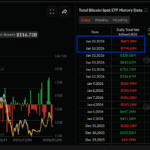

dshort.com
A standard way to investigate market valuation is to study the historic Price-to-Earnings (P/E) ratio using reported earnings for the trailing twelve months (TTM). Proponents of this approach ignore forward estimates because they are often based on wishful thinking, erroneous assumptions, and analyst bias.
The average P/E ratio since the 1870's has been about 15. What is it today? With the August S&P 500 close at 1020.62 and the TTM earnings of $7.62, the current TTM P/E registers 133.9. Of course this is complete nonsense. At the top of the Tech Bubble in 2000, the conventional P/E ratio was a mere 30. It peaked north of 47 two years after the market topped out. So a P/E ratio of 133.9 with the index down 34% from its October 2007 all-time high can't be taken seriously.
As these examples illustrate, in times of critical importance, the conventional P/E ratio often lags the index to the point of being useless as a value indicator. "Why the lag?" you may wonder. "How can the P/E be at a record high after the price has fallen so far?" The explanation is simple. Earnings fell faster than price. In fact, the negative earnings of 2008 Q4 (-$23.25) is something that has never happened before in the history of the S&P 500. We now appear to be recovering from this unprecedented situation. But a full recovery will take time.
Legendary economist and value investor Benjamin Graham noticed the same bizarre P/E behavior during the Roaring Twenties and subsequent market crash. Graham collaborated with David Dodd to devise a more accurate way to calculate the market's value, which they discussed in their 1934 classic book, Security Analysis. They attributed the illogical P/E ratios to temporary and sometimes extreme fluctuations in the business cycle. Their solution was to divide the real price by the 10-year average of earnings, which we'll call the P/E10. In recent years, Yale professor Robert Shiller, the author of Irrational Exuberance, has reintroduced the P/E10 to a wider audience of investors. As the accompanying chart illustrates, this ratio closely tracks the real (inflation-adjusted) price of the S&P Composite. The historic P/E10 average is 16.3.
After dropping to 13.4 in March, the July 2009 mid-month P/E10 has rebounded to 18.3. The chart below gives us a historical context for these numbers. The ratio in this chart is doubly smoothed (10-year average of earnings and monthly averages of daily closing prices). Thus the fluctuations during the month aren't especially relevant (e.g., the difference between the monthly average and monthly close P/E10).
Of course, the historic P/E10 has never flat-lined on the average. On the contrary, over the long haul it swings dramatically between the over- and under-valued ranges. If we look at the major peaks and troughs in the P/E10, we see that the high during the Tech Bubble was the all-time high of 44 in December 1999. The 1929 high of 32.5 comes in at a distant second. The secular bottoms in 1921, 1932, 1942 and 1982 saw P/E10 ratios in the single digits.
For a more precise view of how today's P/E10 relates to the past, our chart includes horizontal bands to divide the monthly valuations into quintiles — five groups, each with 20% of the total. Ratios in the top 20% suggest a highly overvalued market, the bottom 20% a highly undervalued market. What can we learn from this analysis? Over the past several months, the decline from the all-time P/E10 high dramatically accelerated toward value territory, with the ratio dropping from the 1st to the upper 4th quintile in March. The price rebound since March has now put the index in the lower range of the 2nd quintile — on the expensive side.
A more cautionary observation is that every time the P/E10 has fallen from the first to the fourth quintile, it has ultimately declined to the fifth quintile and bottomed in single digits. Based on the latest 10-year earnings average, to reach a P/E10 in the high single digits would require an S&P 500 price decline below 600.
Of course, a happier alternative would be for corporate earnings to make a strong and prolonged surge. When might we see the P/E10 bottom? These secular declines have ranged in length from over 19 years to as few as three. The current decline is now in its ninth year.




No comments:
Post a Comment